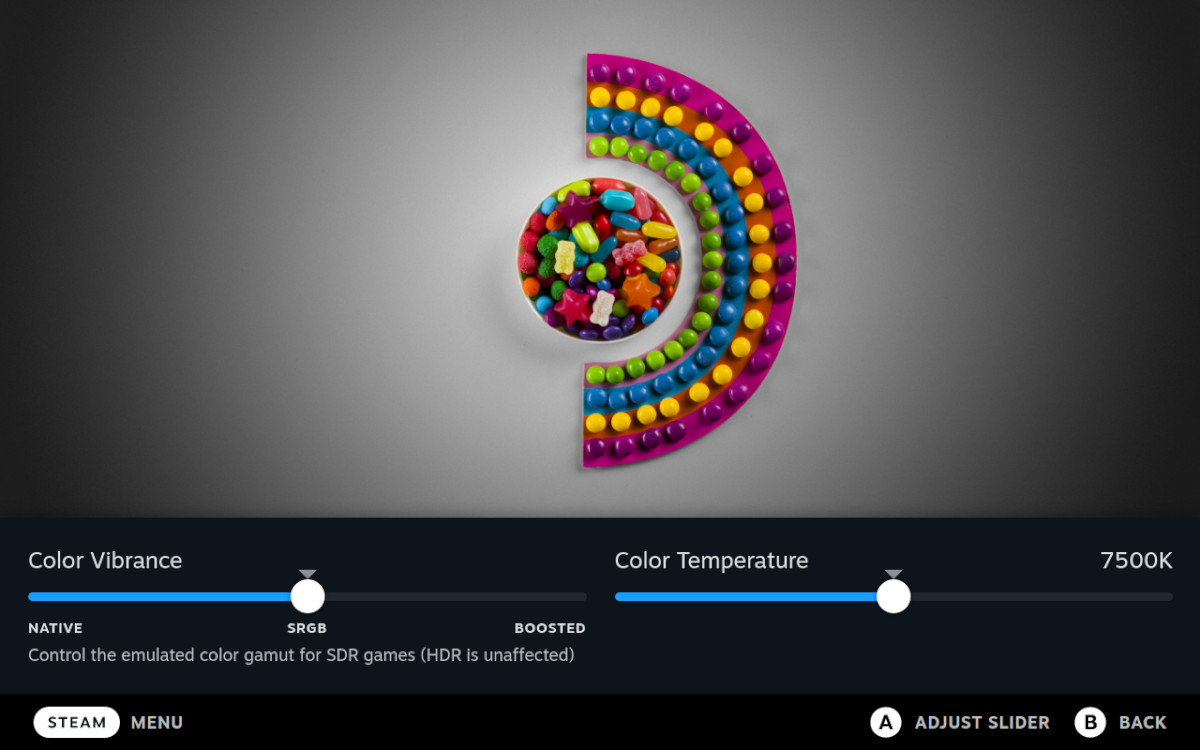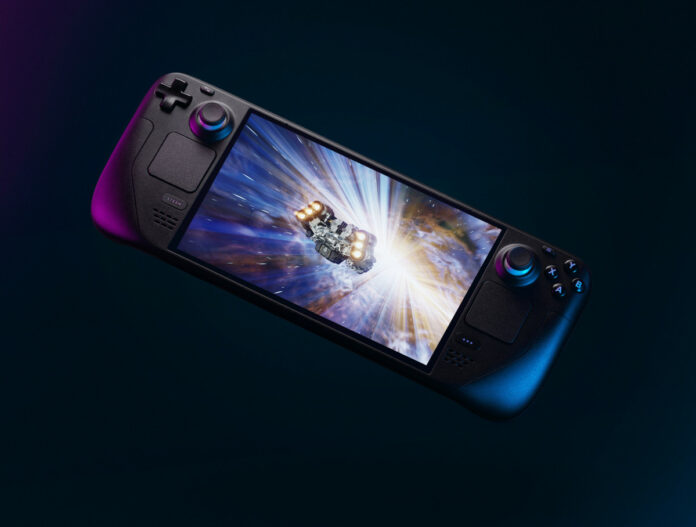Valve has released a beta version of SteamOS 3.5, bringing with it a bunch of new features, a suite of display settings, a number of performance boosts in popular titles, and various system enhancements.
First things first, the Steam Deck’s display will now support the sRGB colour gamut for a warmer image output. What’s more, users can further adjust colour via new vibrance and temperature settings. Of course, users have the option to revert back to pre-update settings if sRGB is not their cup of tea.
Another key display feature is support for variable refresh rates and high dynamic range when connecting the portable gaming handheld to compatible external displays, and it is as simple as enabling the options in display settings when connected to a supported screen. Uber cool.

On the performance front, Starfield players will be pleased to note that Valve has tweaked and updated its graphics drivers with “many performance and functionality improvements,” promising a smoother experience and better overall performance. Starfield has yet to receive Valve’s Verified Seal of Approval, but any uptick in performance is a welcome change.
Last but certainly not least, other notable features include new BIOS settings – users can now manage and adjust power consumption and performance with voltage offset settings – plus an updated app store, improved widget support, and a revamped tiling mechanism. Oh, and I can’t forget, quicker sleep and resume functionality, a number of bug fixes, plus improved latency and Bluetooth stability, whew!
Should you wish to try the SteamOS 3.5 Preview before official release, simply head on over to Settings, System, System Update Channel to access the preview version on your Steam Deck.
For your convenience, the rather extensive patch notes can be viewed down below. Happy gaming.
Display
- Added Settings -> Adjust Display Colors, to tune the display’s Color Vibrancy and Color Temperature. The settings can be tuned with a preview of a test image (above), or with your running game.
- Native: The native display color appearance (the color rendering for Steam Deck prior to this update).
- sRGB: Emulate the sRGB primaries, in a smooth manner that does not introduce gradient clipping.
- Boosted: Emulate a wider-gamut display appearance, resulting in increased apparent vibrance. May result in gradient clipping.
- HDR can now be enabled in Display Settings if supported by the external display.
- VRR can now be enabled in Display Settings if supported by the USB-C adapter.
- Reworked Quick-Access scaling settings to separate scaling from filtering. Added Stretch and Zoom scaling as new options to handle different aspect ratios.
- Fixed touchscreen orientation while external display is connected.
- Compositing is now avoided in additional scenarios, reducing latency and stutter in situation with multiple overlays on screen.
- Improved latency in certain situations where the application renders slower than the display’s refresh rate.
General
- Fixed an issue where certain workloads would exhibit severe CPU performance issues unless SMT was manually disabled.
- External storage devices are now auto-mounted when connected to Steam Deck. To format or manage storage devices use the new device management interface in Settings->Storage.
- Updated graphics drivers, with many performance and functionality improvements. Improved performance for Starfield. Fixed viewmodel corruption in Amnesia: The Bunker and launch failures for Immortals of Aveum and Kaiju-A-GoGo.
- Improved Bluetooth connection stability, especially with multiple controllers
- Slightly improved sleep resume speed
- Implemented switching between controller bindings and mouse/keyboard desktop bindings by long-pressing Options in the Linux hid-steam driver, to match Steam’s default Desktop configuration.
- Improved fade transitions between applications.
- The contents of the performance overlay can now be customized by creating a ~/.config/MangoHud/presets.conf configuration file.
- Fixed a bug where some games could appear stretched if their window size didn’t match their swapchain size (eg. Naruto Shippuden Ultimate Ninja Storm 4)
- Fixed Disgaea PC needing to be tapped on before input works
- Fixed physical dimensions reported to games, fixing some issues with an incorrect aspect ratio sometimes being detected (eg. Returnal)
- Worked around a problem where Allow Tearing could cause heavy stuttering if the Performance Overlay or other overlays appeared on screen. Tearing is now impossible in such situations, and the Performance Overlay should be disabled for best results.
- Fixed a problem where keyboard input would not be detected in Overwatch 2
- Controller firmware: fixed an issue where some thumbstick touch sensors would lose touch periodically
Firmware 116
- Added voltage offset settings.
- Improved robustness of the Firmware Settings Reset chord (Volume Down + Quick-Access + Power) against some boot hang scenarios.
- Fixed a rare issue that would set the processor TDP limit too low causing CPU and GPU frequencies to be stuck at 400 MHz and 200 MHz respectively.
- Fixed an issue when the charging light would turn back on when plugged in for a while after fully charged.
Updated Arch Linux Base
- This update pulls in newer performance, security and stability fixes for the underlying packages that are the foundation for SteamOS
- Most notably, this includes recent changes to KDE Plasma, Steam Deck’s Desktop Mode. Full notes on these updates can be found on KDE’s website here. Here are a few of the highlights:
- New window tiling system
- Updated Discover (app store / software manager) with a new homepage and improved search
- Discover can now perform system updates from the desktop
- Updated desktop widgets


